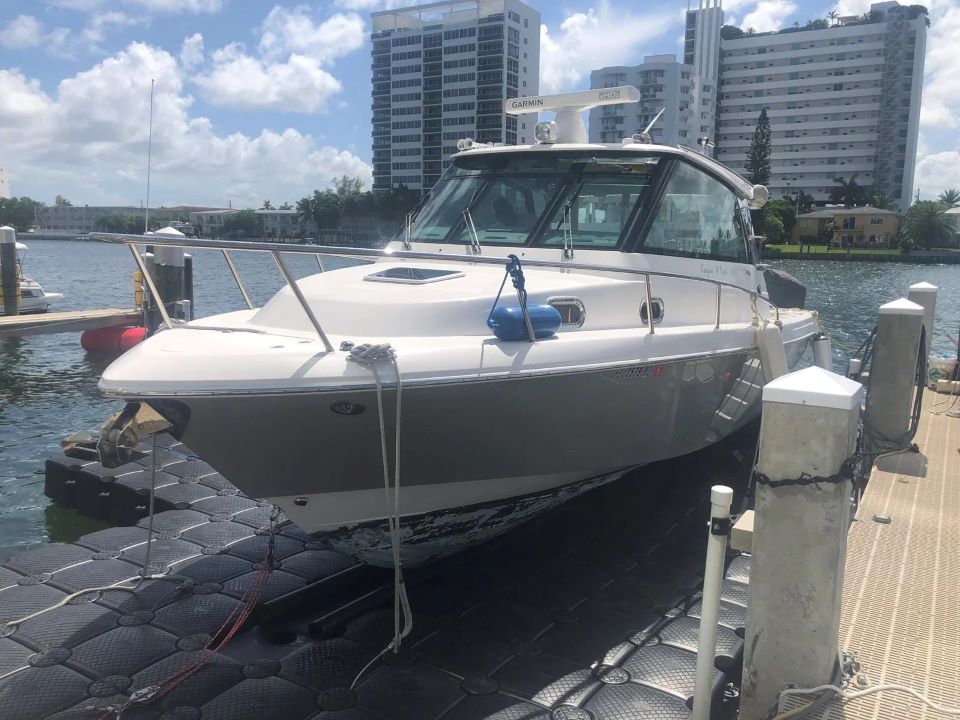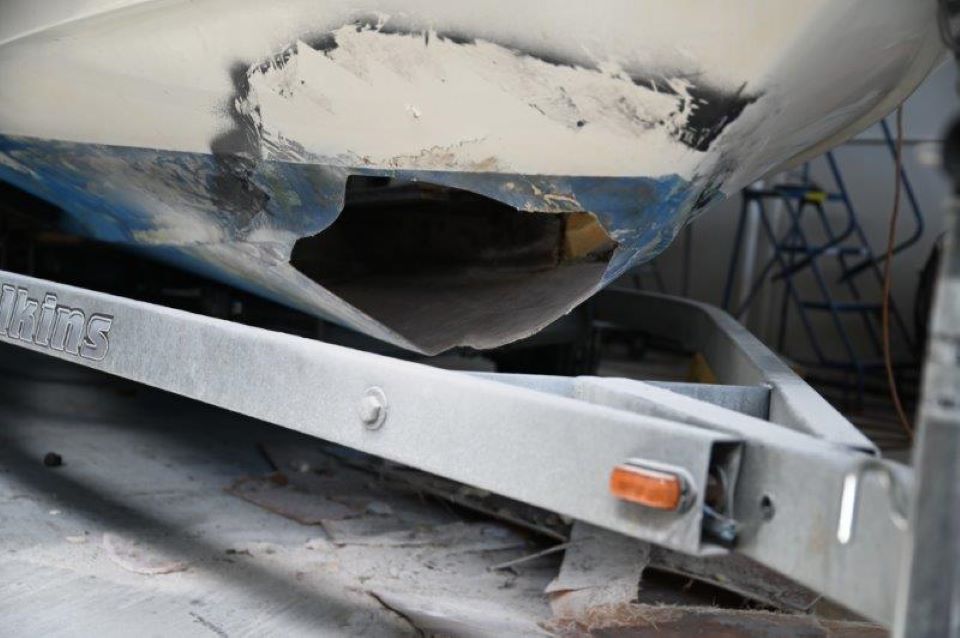Repairing a fiberglass boat may seem like a daunting task, but with the right knowledge and techniques, it can be accomplished effectively. Did you know that fiberglass is a commonly used material in boat construction due to its durability and strength? However, over time, boats may encounter damages such as cracks, holes, or gel coat issues. To ensure your boat stays in top condition, follow these 10 steps on how to repair fiberglass boats like an expert.

Step 1: Assess the Damage
The first step in repairing a fiberglass boat is to assess the extent of the damage. Thoroughly inspect the surface for any cracks, holes, or gel coat issues. Take note of both visible and hidden damages that need attention in order to proceed with an effective repair plan.
Step 2: Gather Tools and Materials
Before starting the repair process, gather all the necessary tools and materials required for the job. You will need items such as safety goggles, gloves, respirator, sandpaper, razor blades, brushes, rollers, fiberglass cloth or matting, epoxy resin or suitable filler compound, plastic spreaders or squeegees, acetone or epoxy solvent for cleaning purposes.
Step 3: Clean and Prepare the Damaged Area
Prior to applying any filler or resin, it’s important to clean and prepare the damaged area properly. Begin by removing any loose debris or old coatings using a razor blade or sandpaper. Then clean the area thoroughly with acetone or epoxy solvent to remove any dirt or contaminants that could affect adhesion.
Step 4: Apply a Suitable Filler or Epoxy Resin
To fill in cracks or holes and restore structural strength to your boat’s fiberglass surface, select a suitable filler compound or epoxy resin. Mix the filler or resin according to the manufacturer’s instructions and apply it carefully to the damaged area using a plastic spreader or squeegee, ensuring that it is evenly distributed.
Step 5: Shape and Sand the Repaired Area
After applying the filler or resin, allow it to cure partially so that it becomes tacky and easy to shape. Use sandpaper or sanding blocks to shape the repaired area to match the surrounding surface. Continue sanding until you achieve a smooth and seamless blend between the repaired section and the rest of the boat.

Step 6: Apply Multiple Layers of Fiberglass Cloth or Matting (if needed)
If your boat has significant damage or requires additional reinforcement, you may need to apply multiple layers of fiberglass cloth or matting. Cut the cloth or matting into suitable sizes, saturate them with epoxy resin, and carefully apply them one layer at a time over the repaired area. Ensure each layer overlaps slightly for optimal strength.
Step 7: Allow the Repair to Cure Properly
Once all necessary repairs have been made, allow sufficient time for the fiberglass repair to cure properly. Follow the manufacturer’s instructions for curing time, which typically ranges from several hours to overnight. It’s crucial not to rush this step in order to achieve a durable and long-lasting repair.
Step 8: Sand Down for Final Finishing Touches
After allowing sufficient curing time, use finer-grit sandpaper to smooth out any rough areas resulting from previous repairs. Carefully sand down the surface until it feels even and blends seamlessly with the rest of your boat’s exterior.
Step 9: Apply Gel Coat (if necessary)
If your boat’s damaged area requires a color-matching repair or additional protection, you may need to apply a gel coat. Follow the manufacturer’s instructions for mixing and applying the gel coat, ensuring an even application that matches the surrounding surface. Allow it to cure fully before proceeding to the next step.
Step 10: Polish and Wax the Repaired Area
To achieve a professional-looking finish, polish and wax the repaired area of your fiberglass boat. Use a high-quality marine polish designed for fiberglass surfaces and apply it according to the product instructions. Follow up with a marine-grade wax to protect the repair and restore its shine.

Variation in Approach Based on Damage Severity:
If your fiberglass boat has more severe damage, such as larger cracks or major structural repairs, it is advisable to seek professional assistance or consult a marine expert who can provide specialized guidance tailored to your specific situation. They will be able to assess the severity of the damage and recommend appropriate repair techniques.
Tips for Maintaining a Fiberglass Boat
Keeping your fiberglass boat in good condition is essential for its longevity and performance on the water. Here are some valuable tips to help maintain your fiberglass boat:
- Regular Cleaning: Make it a habit to clean your boat after each use. Remove dirt, salt residue, and any other debris using a mild detergent or boat-specific cleaner. Rinse thoroughly with fresh water.
- Waxing and Polishing: Apply a high-quality marine wax to protect the gel coat and provide UV resistance. This will help maintain the shine and prevent oxidation. Regularly polish the boat to remove any stains or minor scratches.
- Minimize Sun Exposure: Try to keep your boat protected from excessive sun exposure by using covers or storing it in shaded areas when not in use. Prolonged exposure to UV rays can lead to fading and degradation of the gel coat.
- Handle with Care: Be mindful of how you handle your fiberglass boat, both on and off the water. Avoid hitting hard objects, dragging on rough surfaces, or beaching the boat without proper protection.
- Check for Damage: Regularly inspect your boat for any signs of damage, such as cracks, chips, or blisters in the fiberglass surface. Address any issues promptly to prevent further deterioration.
The Importance of Proper Storage for Fiberglass Boats
The way you store your fiberglass boat can significantly impact its overall condition and lifespan. Here are some reasons why proper storage is crucial:
- Protection from Weather Elements: Storing your boat indoors or under a covered structure helps shield it from extreme weather conditions like rain, snow, and direct sunlight. This prevents unnecessary wear and tear on the boat’s exterior.
- Prevents Moisture Damage: Keeping your boat in a dry storage environment reduces the risk of moisture-related issues such as mold, mildew, or rotting. Moisture can seep into the fiberglass and cause structural damage over time.
- Security: Storing your boat in a secure location minimizes the chances of theft or vandalism. Choose facilities with proper security measures to protect your valuable asset.
- Easy Access for Maintenance: Having a designated storage area for your boat makes it convenient to perform routine maintenance tasks such as cleaning, painting, and repairs. You’ll have all the necessary tools and equipment at hand in an organized space.
- Extends Lifespan: Proper storage practices help extend the lifespan of your fiberglass boat by reducing exposure to damaging elements and minimizing the risk of accidents or mishaps that can occur when a boat is improperly stored.

Key Takeaways
- Assess the damage to your fiberglass boat before starting the repair process.
- Gather all the necessary tools and materials required for the job.
- Clean and prepare the damaged area properly before applying any filler or resin.
- Apply a suitable filler or epoxy resin to fill in cracks or holes in the boat’s surface.
- Shape, sand, and apply multiple layers of fiberglass cloth or matting for reinforced repairs if needed.
Frequently Asked Questions
Here are some common questions about repairing fiberglass boats:
1. How can I identify the extent of damage to my fiberglass boat?
Inspect your boat’s surface for visible cracks, holes, or gel coat issues. Also, feel for any soft spots or areas that seem weakened.
If you’re unsure about the severity of the damage, it’s best to consult a professional who specializes in fiberglass boat repair.
2. What tools and materials do I need to repair a fiberglass boat?
You will require tools such as safety goggles, gloves, sandpaper, brushes, rollers, plastic spreaders or squeegees.
Materials needed include epoxy resin or suitable filler compound, fiberglass cloth or matting, and acetone or epoxy solvent for cleaning purposes.
3. Can I repair small cracks and chips on my own?
Yes, smaller cracks and chips can be repaired with DIY methods using filler compounds or epoxy resins available in the market. Follow proper instructions and techniques for optimal results.
In case of major damages or structural issues, it is recommended to seek professional assistance from experts in fiberglass boat repairs.
4. How long does it take for a fiberglass boat repair to cure?
The curing time depends on various factors such as temperature and humidity conditions as well as the type of resin used. On average, it can take anywhere from several hours to overnight.
To ensure a complete cure and long-lasting repair, always follow the manufacturer’s instructions regarding curing time.
5. Is there anything specific I should do to maintain my repaired fiberglass boat?
Regular maintenance is essential to preserve your repaired fiberglass boat. Clean it after each use, wax and polish regularly, and store it properly to protect it from the elements.
Additionally, perform routine inspections to identify any potential issues early on and address them promptly to prevent further damage.
Final Thought
In conclusion, repairing a fiberglass boat requires careful assessment, thorough preparation, and precise execution. By following the 11 steps outlined in this article, you can confidently restore your boat to its former glory and ensure its longevity.
Remember to assess the damage accurately, gather the necessary tools and materials, clean and prepare the damaged area, and apply suitable fillers or resin. Take your time to shape, sand, and reinforce as needed before applying gel coat or polishing the repaired area. With proper maintenance and care, your fiberglass boat will continue to provide enjoyment for years to come.
